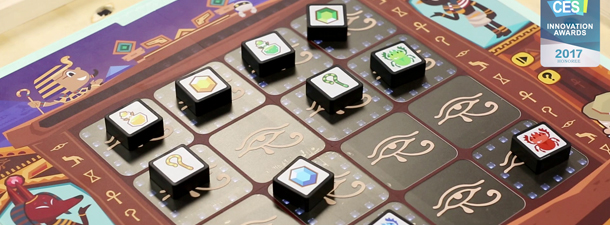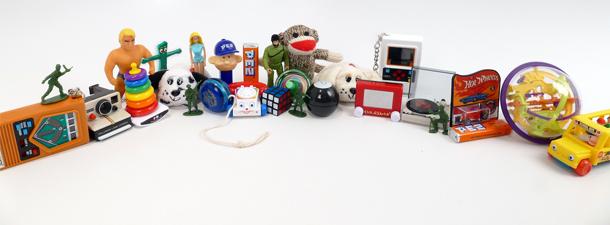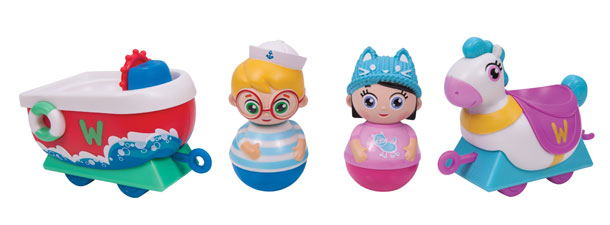Interview with Nate MacDonald and John Schuster, creators of ‘Circuit Cubes’

Circuit Cubes are easy-to-use toys that extend and enrich the possibilities of LEGOs and other toys, helping them be smarter and more engaging. Using STEM and STEAM concepts to make learning fun, Circuit Cubes can be stacked in every direction.
Circuit Cubes were designed from the ground up to fully integrate with LEGO building blocks as well as to transform such ordinary household items as milk cartons and old toys. Their unique transparent design lets kids see the connections being made when they light an LED, power a motor, or activate a switch. Circuit Cubes is the name of the product; the company that produces it is called Tenka Labs.
Founded in 2015 by CEO Nate MacDonald and Chief Product Designer John Schuster, Tenka Labs is based in Sausalito, California. Recently, Nate and John discussed the invention and company and their hopes for the future:
Meagan Meehan (MM) of Entertainment Vine: How did you decide to get into toys and what drew you to technical toys?
 Nate MacDonald (NM): Prior to Circuit Cubes, I spent 15 years as a middle school robotics teacher. I developed STEAM lessons for classes like Inventor’s Lab, Engineering Design, and Makers & Hackers, using high- and low-tech materials. My co-founder John Schuster is an IT professional with a passion for helping kids learn through fun, and often worked with teachers in K-8th grades to implement creative problem-solving within their STEM curriculum. Once we realized there wasn’t anything on the market that can really engage kids in complex concepts like circuitry or STEM, we decided to make it ourselves. Circuit Cubes came from our strong conviction that kids absorb the most when they’re having fun. Our goal is to get kids enthralled with the fundamentals of circuitry, while never losing sight of the element of play.
Nate MacDonald (NM): Prior to Circuit Cubes, I spent 15 years as a middle school robotics teacher. I developed STEAM lessons for classes like Inventor’s Lab, Engineering Design, and Makers & Hackers, using high- and low-tech materials. My co-founder John Schuster is an IT professional with a passion for helping kids learn through fun, and often worked with teachers in K-8th grades to implement creative problem-solving within their STEM curriculum. Once we realized there wasn’t anything on the market that can really engage kids in complex concepts like circuitry or STEM, we decided to make it ourselves. Circuit Cubes came from our strong conviction that kids absorb the most when they’re having fun. Our goal is to get kids enthralled with the fundamentals of circuitry, while never losing sight of the element of play.
MM: Circuit Cubes are quite advanced. What do you think children find most appealing about them?
NM: Kids quickly understand how Circuit Cubes work. There’s little frustration and a lot of immediate satisfaction. When a kid gets how a toy works, he or she is able to create solo projects and go on their own adventures without adult guidance. This kind of autonomy also promotes pride and self-esteem. Circuit Cubes are great for any kid age 7 or older. They’re designed to be challenging enough so that kids feel empowered and use their creative problem-solving skills. The limitless possibilities that Circuit Cubes provide are probably what is most appealing about the product. We’re constantly surprised by the projects kids come up with!
MM: Was it hard to design this item? For instance, what kinds of kinks did you have to work out of the original models?
John Schuster (JS): I never look at designing something as being hard; to me, it’s just a challenge in which I get totally immersed. I like to start with looking at the core features I am trying to create, the problem I’m trying to solve. And of course, the best solutions are the simplest ones.
For Circuit Cubes, we want the user experience to be the adventure the kids go on, not the technology being used, so we went through many iterations that focused on the product’s flexibility and ease of use. One of the challenges was in making the product work vertically as well as horizontally and diagonally. It seems straightforward, but more variables means more complexity.
Emily Pilloton, one of my heroes in the design world and Maker Movement, counsels designers to keep our mistakes out in the open. That means, for example, that while your second prototype may have failed, it might also someday give you an idea for solving a different problem. We’ve seen that again and again in our development cycle. We’ve actually looked back at old prototypes for inspiration to solve problems that came up in a much later prototype. In design, you really do learn from your mistakes.
MM: What has consumer response been like so far? Were any reactions especially memorable?
NM: We’re delighted and amazed. Since we launched in February, kit reservations continue to blow our expectations away. We’re still taking reservations at an introductory 20% discount; pre-orders begin May 15. When a seven-year-old picked up two Circuit Cubes and turned them into an electric toothbrush, that was an “aha” moment for me. It is during these kinds of exploratory builds with kids that we feel like we are reaching our goal to help inspire a generation of inventors.
MM: Have you designed any other games or are your currently working on anything else that you would like to discuss?
NM: We have three Circuit Cube kits set to launch early this summer — Whacky Wheels, Smart Art, and Bright Lights. But we’re already at work on a Bluetooth-enabled Circuit Cube and a Super Spy kit that will be available for the holidays.
MM: How do you think up ideas for your products and do you have any grand plans for the future?
 NM: We keep our own children as well as our students in mind when designing every project. Without a doubt, they are our biggest inspiration. We based our original prototype on the standard bulky model for learning circuitry, and then just continued to iterate until we reached something small enough to build into other projects. From there, it was just a matter of observing what got the kids most excited.
NM: We keep our own children as well as our students in mind when designing every project. Without a doubt, they are our biggest inspiration. We based our original prototype on the standard bulky model for learning circuitry, and then just continued to iterate until we reached something small enough to build into other projects. From there, it was just a matter of observing what got the kids most excited.
MM: In your experience, what have been the most rewarding part of working as inventors?
NM: I believe it’s the opportunity to bring more girls into engineering. As a teacher, I established two all-girls First LEGO robotics teams. Unused to being encouraged around engineering, the girls really had to be convinced to join. Several of them have since gone on for engineering degrees. One of them was the only girl in her high school engineering class.
MM: Where do you hope your careers—and inventions—will be in a decade from now?
NM: We hope to continue to guide, inspire, and mentor the future makers and engineers of the world – while, of course, having fun.
MM: What advice would you give to someone who is striving to enter the toy/games industry, especially for robotic or technical toys?
JS: Be your own customer. You’ve got to play with your product like your customer would and listen to all their feedback. You’ve got to be able to compromise on design elements that aren’t providing real value to your customer. When we started designing Circuit Cubes, we knew from our experience as teachers that it would have to be fun first, with the learning slipped in. We put ourselves in the shoes of our students and knew we’d have to make something that kept the education and fun going.
* * * * *
To learn more about Circuit Cubes, visit their website.



